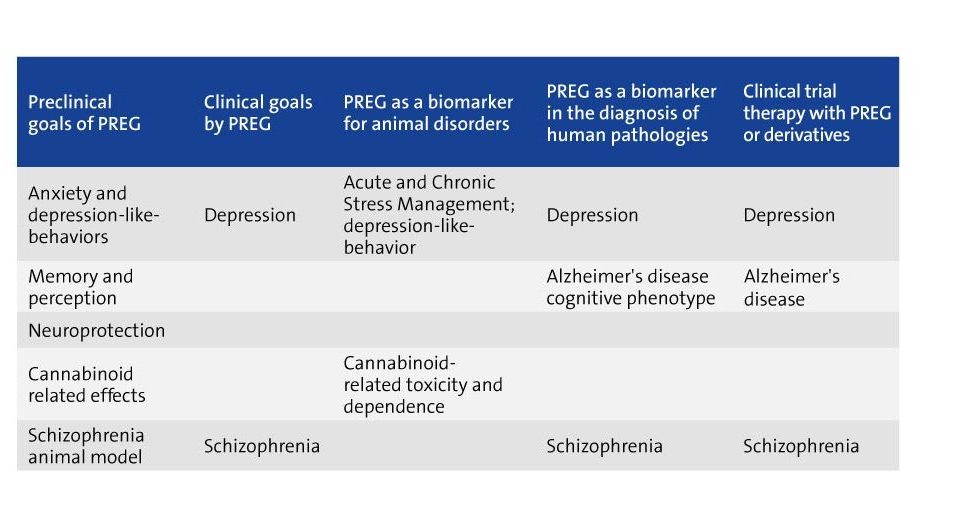Considerable evidence from preclinical and clinical studies shows that steroids and in particular neurosteroids are important endogenous modulators of several brain-related functions. In this context, it remains to be elucidated whether neurosteroids may serve as biomarkers in the diagnosis of disorders and might have therapeutic potential for the treatment of these disorders.
Pregnenolone (PREG) is the main steroid synthesized from cholesterol in mammals and invertebrates. PREG has three main sources of synthesis, the gonads, adrenal glands and brain and is submitted to various metabolizing pathways which are modulated depending on various factors including species, steroidogenic tissues and steroidogenic enzymes. Looking at the whole picture of steroids, PREG is often known as the precursor to other steroids and not as an active steroid per se. Actually, physiological and brain functions have been studied mainly for steroids that are very active either binding to specific intracellular receptors, or modulating with high affinity the abundant membrane receptors, GABAA or NMDA receptors.
However, when high sensitive and specific methodological approaches were available to analyze low concentrations of steroids and then match endogenous levels of different steroid metabolomes, several studies have reported more significant alterations in PREG than in other steroids in extraphysiological or pathological conditions, suggesting that PREG could play a functional role as well. Additionally, several molecular targets of PREG were revealed in the mammalian brain and beneficial effects of PREG have been demonstrated in preclinical and clinical studies.
On this basis, this review will be divided into three parts. The first provides a brief overview of the molecular targets of PREG and the pharmacological effects observed in animal and human studies. The second will focus on the possible functional role of PREG with an outline of the modulation of PREG levels in animal and in human research. Finally, the review will highlight the possible therapeutic uses of PREG that point towards the development of pregnenolone-like molecules.
